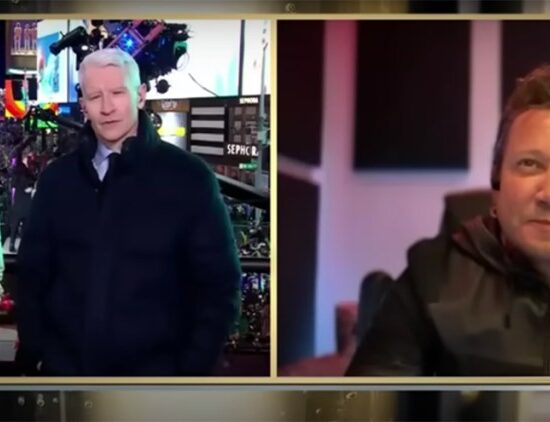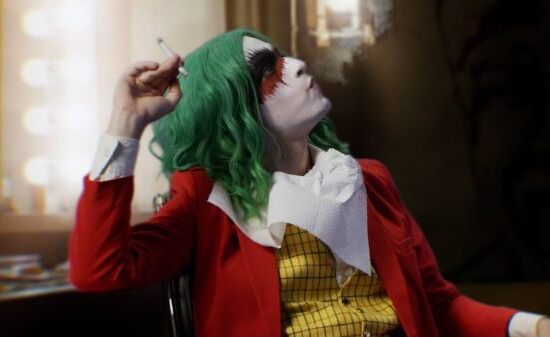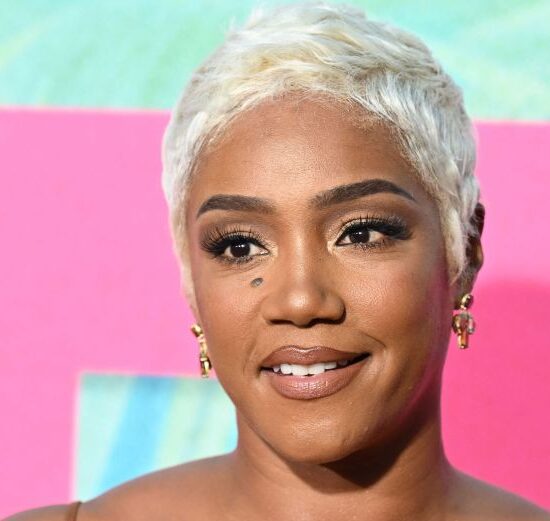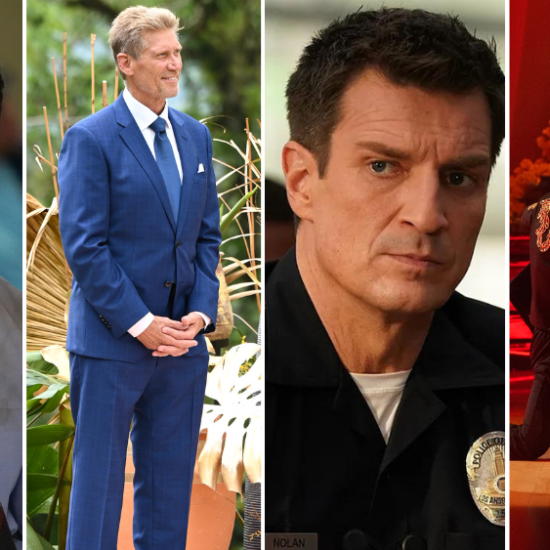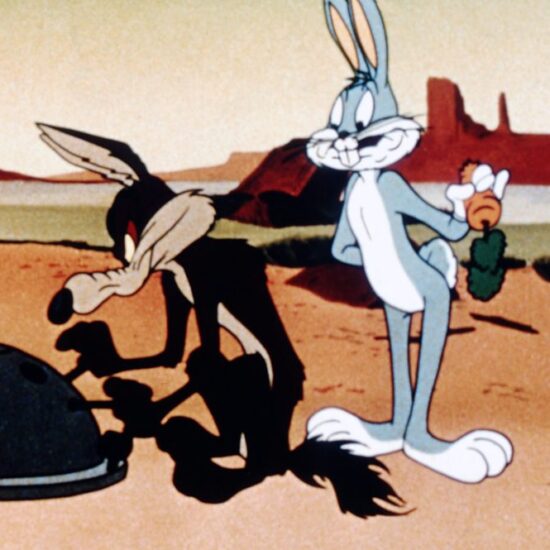
In just over a decade, Ruben Östlund has established himself as one of the new Cannes masters, leapfrogging from sidebar to sidebar—2011’s Play debuted in Directors’ Fortnight, 2014’s Force Majeure was selected for Un Certain Regard—before jumping to the Competition, which he won at first strike with 2017’s art-world satire The Square. This year he returns with Triangle of Sadness, starring Harris Dickinson, Charlbi Dean and Woody Harrelson. The Swedish director cheerfully offers to tell Deadline everything—even the ending—but this is a director whose films are less about plot than they are about people, and his latest subject, the fashion world, suggests plenty of food for his dark thoughts.
DEADLINE: How does it feel going back to Cannes as a Palme d’Or winner? Does that make you nervous about going back into competition?
RUBEN ÖSTLUND: I’m not nervous to go back in, but I was very nervous waiting for the decision. That was really nerve-racking. And now I’m just happy and relieved that we are in Competition, and I’m looking forward so much to showing the film to an audience. There’s also a feeling this time is that the restrictions are not as heavy anymore since the pandemic, so I’m looking forward to a festival where we are getting back a little bit more to a cinema climate.
Plattform-Produktion
DEADLINE: What can you tell me about Triangle of Sadness?
ÖSTLUND: Well, I can tell you what a “triangle of sadness” is. If you have a wrinkle in between your eyebrows, it’s called “the trouble wrinkle” in Swedish, and you get it if you have had a lot of trouble in your life. But you can fix it with Botox in 15 minutes. It’s a term that comes from cosmetic surgery—not plastic surgery, cosmetic surgery—and I thought it was comical. Like, a dark, comical comment about surface and beauty—our obsession with beauty, and our obsession with looks, and our belief that our inner problems will be solved if we construct a great shell around ourselves.
DEADLINE: It’s set it in the fashion world, isn’t it?
ÖSTLUND: Yes. And the reason that I’m doing something that takes place, or at least starts, in the fashion world and in the beauty industry is because my wife, Sina Görtz, who I met in around 2014, is a fashion photographer. When I met her, I wanted to hear everything about the fashion industry—there’s something a little scary about it at the same time that it’s attractive. And she started to tell me a lot about the male models. To be a male model is not really considered a high-status profession. The male models earn, like, one third or less of whatever female models do, so it’s really a mirror of our society, where you flip the roles of the sexes. I mean, it’s one of the few professions where men earn less than women. So, with that as a starting point, I got interested in the idea of beauty as a currency.
DEADLINE: How does it unfold?
ÖSTLUND: We start in the fashion world, and then we are on a luxury yacht, and then we end up on a deserted island—basically, the film takes place in these three different environments.
DEADLINE: It’s a huge cast. Is there a lead character, or is it an ensemble?
ÖSTLUND: I would say that there’s two lead characters. It’s Harris Dickinson, a British actor, who plays a male model. And then it’s Charlbi Dean, a South African actress, who plays a female model. And this couple, we follow them through the film. But it is also in many ways an ensemble movie, because on the yacht and on the island, we have eight actors that are creating the ensemble and we have quite big parts for all of them. We have actors from the Philippines, Germany, France, Sweden, Denmark, U.S. and England, so it’s multinational.
DEADLINE: The Square took flak for being 150 minutes. Is this one going to be as long?
ÖSTLUND: It’s going to be perfect [laughs]. Not too long, not too short, hopefully. But then it’s a story that takes, of course, a little bit of time to tell, because you have to establish these three different environments. Hopefully it’ll feel like a fresco—like a rich adult rollercoaster, I like to say, because it’s going to be entertaining and interesting. But it’s for adults.

Tobias/Plattform Produktion
DEADLINE: Does that mean adult content?
ÖSTLUND: Not really any explicit stuff. Maybe there’s… some things. I won’t talk about them now, but there are some things that you don’t want to show your kids.
DEADLINE: Your film was one of the first films made under COVID protocols, wasn’t it?
ÖSTLUND: Yeah. We started in January of 2020. And then we started to hear about this virus in China, and then in Italy, and immediately an alarm bell was ringing in the back of my head. So, we started the shoot. We stopped once in March, because of the lockdown, and then we were waiting for the fall. Actually, we shot a little bit in June: we flew Woody Harrelson to Sweden. We managed to get a window of a couple of days before lockdown started again, basically. And then, when we were in Greece and shooting the last part of the film, we managed to finish the film just one day to go before it was lockdown again. So, we completely hit the pandemic when we were shooting this film.
DEADLINE: Am I right in thinking that when you were shooting in Greece, you were slightly removed from people anyway?
ÖSTLUND: Yes, that’s true. But there were also some restrictions in that country—you were not allowed to be on a ship, for example. So, it was stuff like that we had to deal with. I think we did 1,160 Covid tests, and luckily all of them were negative, because if we would have had just one positive test—with one of the main actors or one of the main crew—I don’t know if we would have been able to finish the film. Especially when we were shooting on the yacht because it was so expensive to rent. There was a lot of pressure. But also, what was a good experience for me was that everybody was working so well together, in the film sense, because all differences were put aside—we had bigger problems to deal with, not individual, small dramas. So, I had really nice shoot, in spite of everything.
DEADLINE: So much has changed in the world in the last five or six years. Will it affect the way you work?
ÖSTLUND: Of course. I mean, I think Don’t Look Up is a great film. Even if it’s trying to [force] the satire, it’s still accurate. These things are happening! Obviously, I’m looking at smaller situations. I’m more interested in social interactions between humans when we have a kind of awkwardness, and when we are dealing with the fear of losing face and so on.
But I think there are parts of the film that actually, all of a sudden, became very contemporary. Like, on the yacht, we have Woody Harrelson as a Marxist captain, and he gets his revenge on the guests of the boat, all these rich passengers, by always having the captain’s dinner when the weather gets rough. So, they are sitting there eating a seven-course meal, and it’s going to turn into mayhem. But there’s one guy that isn’t sea-sick, and he’s a Russian oligarch. So, we have the American communist and the Russian capitalist, sitting and drinking together and starting to talk politics.
I was brought up during the ’80s and ’90s, with the Eastern and Western blocs, constantly pushing their ideologies at each other, then suddenly, this thing in Ukraine happens, and we’re back to this Eastern/Western-bloc mentality. In many ways, it’s so old-fashioned, but now it’s happening in the world again.
DEADLINE: Your 2014 film Force Majeure was remade in Hollywood as Downhill with Will Ferrell. Were you involved?
ÖSTLUND: No, I let them get on with it. I thought it was important that they were doing their own version of the film, and I was very happy that they wanted to do a remake. I didn’t have any problem with it. You have to look at it like if someone is doing a theater play over and over again—everybody’s allowed to have their take on it. There were some great scenes in the film, actually. I was a little jealous about that.
DEADLINE: How do you look back on Force Majeure? It was your breakthrough, wasn’t it?
ÖSTLUND: When I think about Force Majeure, it was really, for me, the first film when I started to look at male behavior—the male image and being a man in our times. And then The Square also is really investigating what being a man is. What are we struggling with, and how does the outside world look at us? And I would say that, in many ways, Triangle of Sadness is the third film now that is really investigating what it is to be a man. And I have gotten a lot of inspiration from my own life.

DEADLINE: Has the film changed your views on the fashion industry?
ÖSTLUND: No. I mean, the people that are in the fashion are just nice, normal people that are not different from any other industry, I would say. As soon as you get to know them, you don’t feel so threatened by their obsession with clothes. Something that I don’t like about the fashion industry is that it’s trying to sell us clothes and products by preying on our insecurities.
Just to point out an example—and this is also in the film—if you look at the very posh brands, you see that the models basically never smile, and they look down on the consumer. Like, they’re on the top of the hierarchy, and those clothes are sold really in order for you to camouflage yourself within the social group that you feel that you belong to. So, if you pay a lot for your clothes, you can also be on top of the hierarchy and look down on other people. But the cheaper the brand gets, the more the models are smiling and welcoming, like, “Maybe we’re at the bottom of the triangle here, but we’ll have a great time together.” They know a lot about sociology, I would say, in the fashion industry.
DEADLINE: Have you chosen your outfit yet for the red carpet?
ÖSTLUND: Yes. You know what? As research, I actually did a little bit of a collection for a friend of mine. I have a brand, a fashion brand. I did my own tuxedo, and it’s called Lumière, after the cinema in Cannes. So, I will wear that one, of course.









